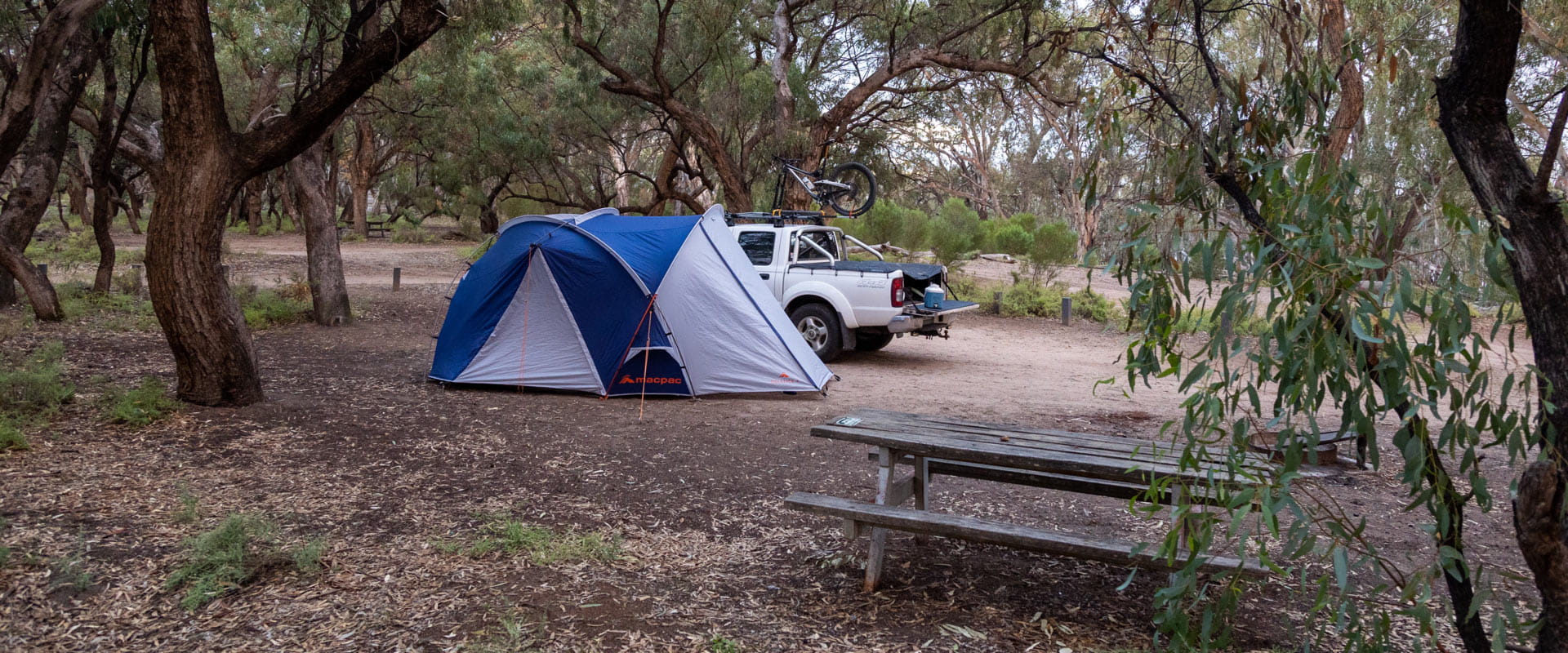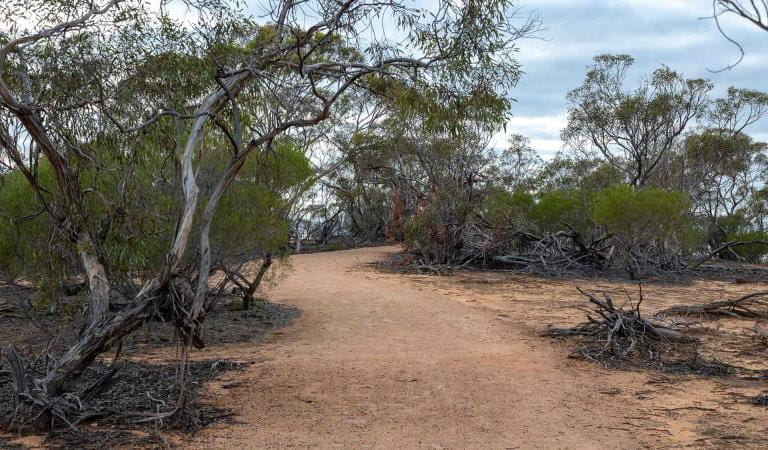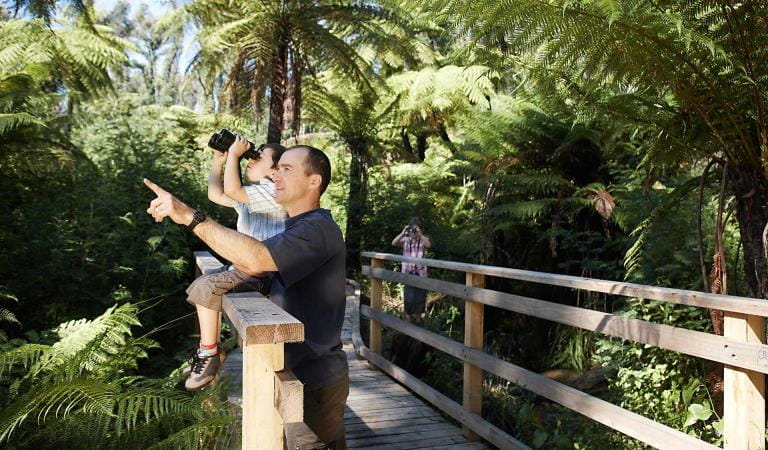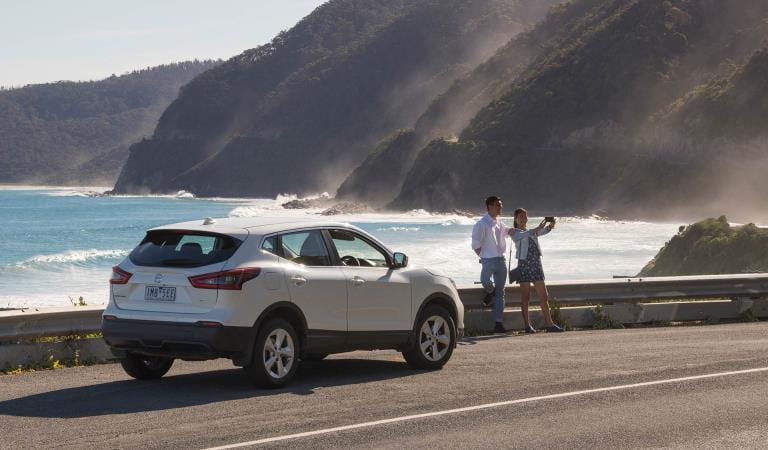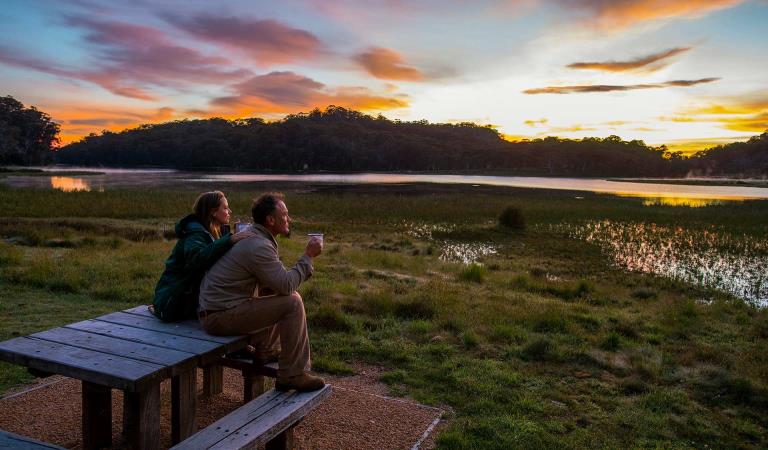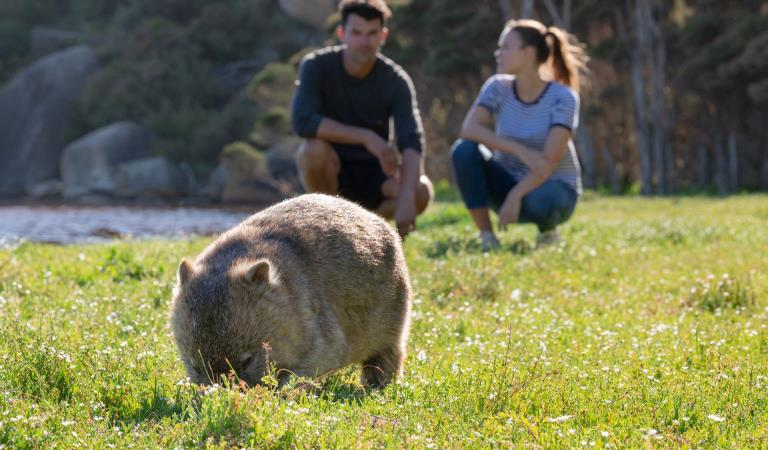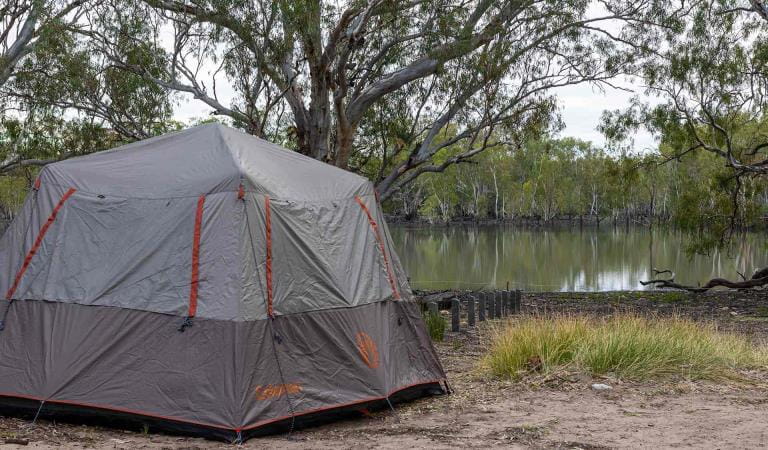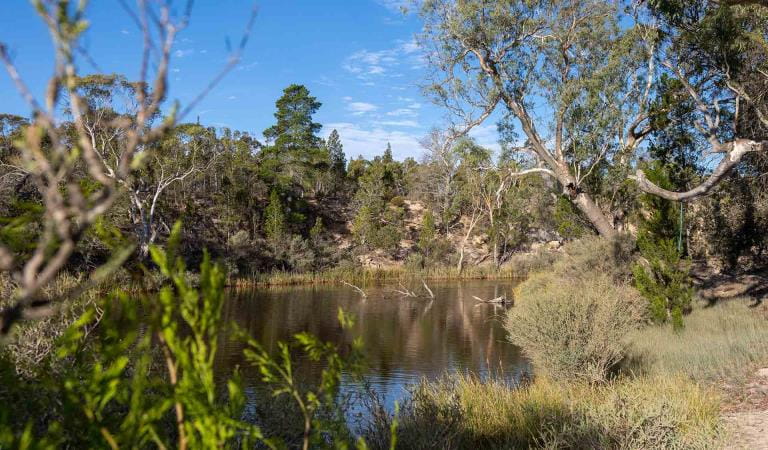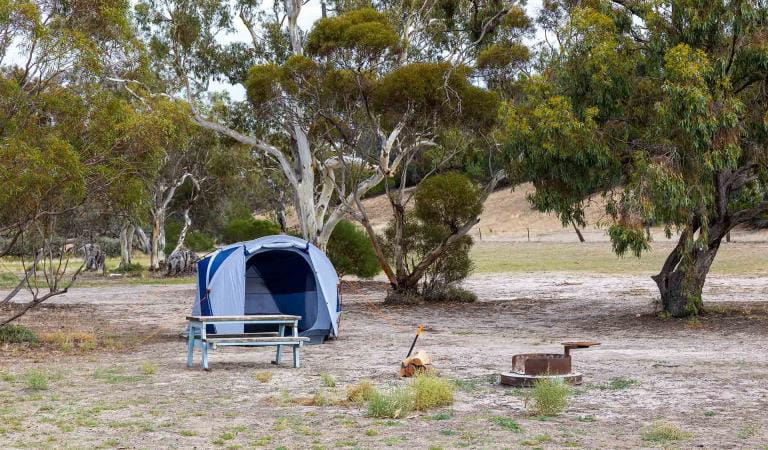Explore
Lake Mournpall Camping Area
Relax at camp and enjoy the company of native wildlife, or set out and explore one of the nearby walking trails.
Lake Mournpall Camping Area offers 16 unpowered campsites, suitable for tents, camper trailers, campervans and caravans.
Campground facilities include non-flush toilets, fireplaces and picnic tables.
Individual campsites cannot be reserved, please select your campsite(s) within the campground on arrival.
Advanced bookings and payment are required year-round. Each campsite holds a maximum of six people. Please book multiple sites for bookings of more than six people.
The park has a rich variety of birdlife ranging from wetland species such as Pelicans, Ducks and Spoonbills to dry mallee specialists such as Malleefowl and Emu Wrens.
Murray Cod and Golden Perch (Yellowbelly) provide good sport for anglers. Unfortunately, European Carp are present in large numbers. In season, Yabbies and Murray Crayfish may also be found. A Victorian recreational fishing licence is required for fishing and yabbying and can be purchased from agriculture.vic.gov.au/fisheries.
Things to do in the area
Walking in Hattah-Kulkyne National Park
Bird watching
Long drives
Sunrises and sunsets
Wildlife viewing
How to get there
Lake Mournpall Camping Area
When you're there
Need to know
Lake Mournpall Camping Area
Accessibility
Visiting a park can be more of a challenge for people with disabilities, however in Victoria there are a wide range of facilities to help people of all abilities enjoy our wonderful parks around the state.
Be prepared and stay safe
Hattah - Kulkyne National Park is in the Mallee fire district. Bushfires can occur during the warmer months. It is your responsibility to check current and forecast weather conditions. Campfires cannot be lit on days of Total Fire Ban, however gas cookers can be used for preparing food.
Check the Fire Danger Rating and for days of Total Fire Ban at emergency.vic.gov.au, on the Vic Emergency App or call the Vic Emergency Hotline 1800 226 226.


